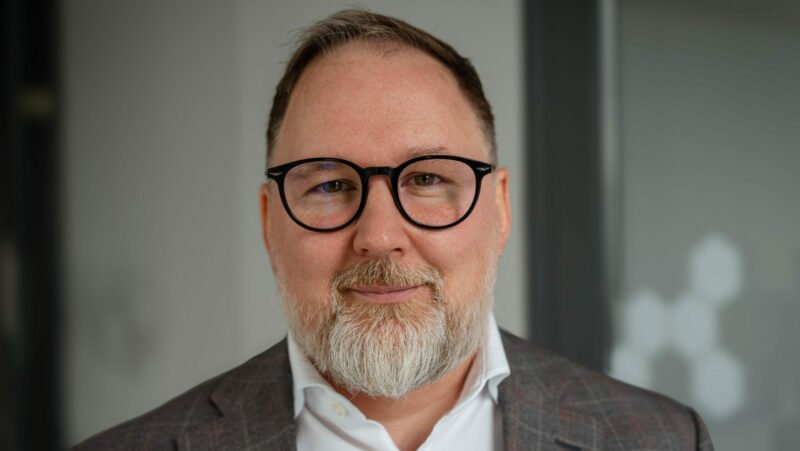
ABOUT 10 years ago scientists at Curtin University in Western Australia discovered gold particles on plant leaves. They theorised that the gold molecules had been brought together by glycine, an amino acid in the plant that also turns up in foods such as tofu and gives umami flavour its distinctive taste.
The science came to the attention of pipette-toting chemists at Draslovka, a 118-year-old business founded in the Czech Republic when it was still a vassal of the Austro-Hungarian empire. The chemists subsequently discovered that glycine also bonds base metals such as nickel and copper.
Draslovka supplies chemicals to the primary industries of agriculture and mining. Glycine, however, is a different proposition. Unlike sodium cyanide — a mining reagent that Draslovka supplies as its main mining product — glycine is nontoxic. It’s also better at extracting base metals, which results in two catalytic developments for the mining sector, says Draslovka group CEO Pavel Brůžek.
The first development is that an estimated $75bn worth of metals in gold and copper mines alone can be re-mined in Western world tailings dams, previously inaccessible because existing technologies are not efficient enough. The second is that ore bodies that were deemed too low grade to be payable suddenly become payable with glycine, which Draslovka has developed as glycine leaching technology (GLT).
“There is a lot of nickel in people’s backyard; you’re really speaking of tens of billions that are already in the locked inventory and that are considered to be a liability,” says Brůžek.
The fact that GLT is nontoxic is critical in the mining sector, owing to extraordinary difficulties miners run into when trying to have greenfield projects permitted. The current merger & acquisition frenzy, among especially the large-cap diversified mining companies, is driven partly by the higher cost of developing standalone projects. Miners’ best deal premiums today are cheaper than waiting for a government to license projects.
Glycine technology couldn’t have come at a better time for Draslovka, which delayed a planned IPO in 2022 amid economic conditions that Brůžek describes as “a flock of black swans descending on a lake”. The invasion of Ukraine by Russia sent the prices of energy and chemical inputs soaring. Draslovka produced a bottom-line loss. Developing GLT is an accelerated response to get the business back on the rails.
The strategy might be working. Barrick Gold is using glycine technology — known in the gold industry at GlyCat — at its mines in Tanzania. Jubilee Metals, a UK-listed business operating in Zambia and South Africa, is another early adopter of the technology.
Brůžek estimates an order book, described in terms of “total market value generated”, at $800m. For its 2023 financial year, Draslovka posted a healthy turnaround.
But there are some risks in rolling out GLT quickly. Cannibalisation of Draslovka’s existing cyanide sodium business is the major one, Brůžek acknowledges. But the gambit is that by increasing access to more deposits, effectively expanding the market, the company is able to enlarge the pie for everyone. It’s not a charity mission, of course: Draslovka has been buying up competitors to establish early-mover dominance. “There is more to spread, the cake is bigger so let’s discuss how we’re going to [distribute] the cake,” says Brůžek.
If the name of Draslovka rings a bell, it’s because the company was in late 2021 frustrated in its attempt to buy Sasol’s sodium cyanide business — it was blocked by the Competition Commission on pricing concerns. Miners such as Sibanye-Stillwater and Pan African Resources lodged complaints, fearing an inflation in cyanide prices.
Brůžek says he doesn’t blame mining firms — some of which are Draslovka clients — but adds they couldn’t see then “what I could see”.
He says: “Would it be fundamentally better and easier and smoother to have a strong local business substance that is able to deliver the reagents at higher quality and longer-term stability? Yes, but if your clients don’t want it because they don’t believe it’s the right thing for them to have, you just need to follow that.”
He doubts returning to the deal, but says of South Africa: “We are developing a lot of technologies in platinum group metals and other precious metals, and South Africa is a wonderful country for that.”
Draslovka could also revisit its listing plans at some point. “I think we will see some good recovery, and we’re getting close to that point,” he says of the global economy.
“But we will still give it probably one, or two or three more years in our timeline.”
A version of this article first appeared in the Financial Mail.

